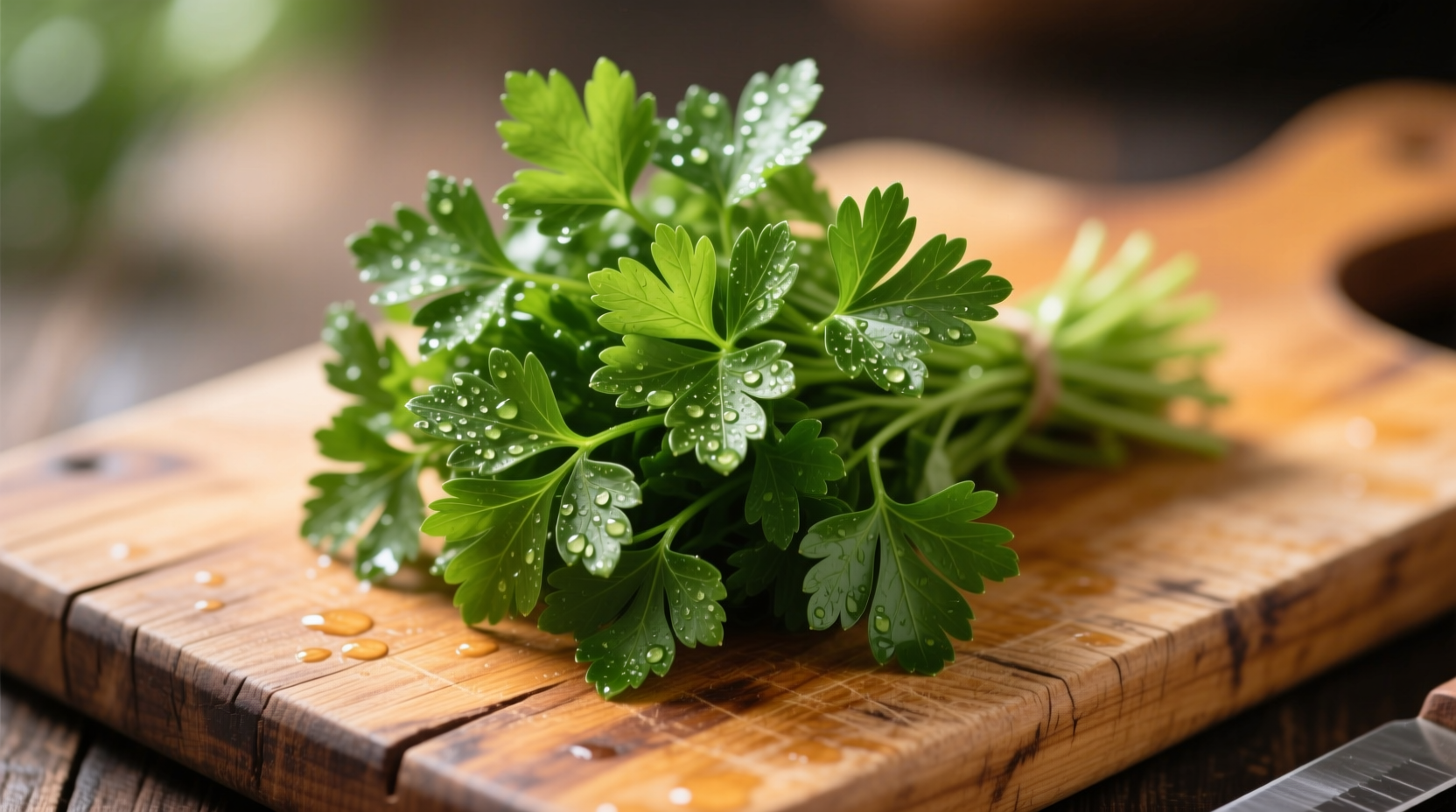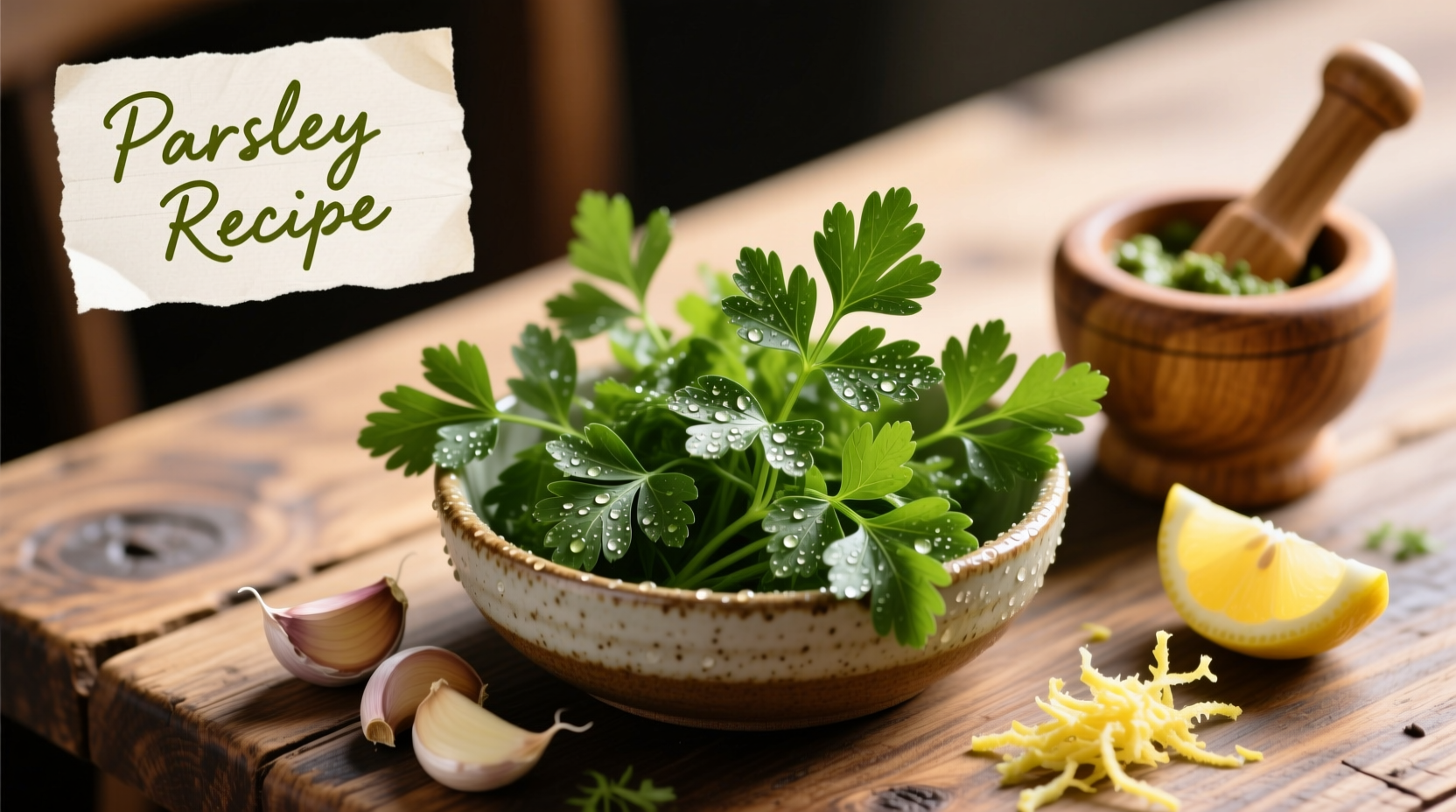Why Parsley Deserves More Than Garnish Duty
Most home cooks relegate parsley to the plate's edge, but professional chefs recognize its culinary potential. Flat-leaf Italian parsley contains higher concentrations of apiol and myristicin—volatile compounds that deliver complex herbal notes when properly prepared. According to the USDA National Nutrient Database, just one cup of chopped parsley provides 133% of your daily vitamin K requirement and 108% of vitamin C, making it nutritionally superior to many leafy greens.

Choosing & Preparing Parsley Like a Pro
Understanding the difference between parsley varieties prevents recipe failures. This comparison helps you select the right type for each application:
| Characteristic | Flat-Leaf (Italian) | Curly Parsley |
|---|---|---|
| Flavor Profile | Robust, earthy, slightly peppery | Milder, grassier notes |
| Best Culinary Uses | Sauces, stews, marinades, pesto | Garnishes, salads, tabbouleh |
| Storage Life (refrigerated) | 10-14 days | 7-10 days |
| Substitution Ratio | 1:1 for recipes requiring bold flavor | 1.5:1 when replacing flat-leaf |
Transformative Parsley Recipes You'll Make Weekly
1. Mediterranean Parsley Steak with Lemon-Garlic Pan Sauce
This French bistro classic demonstrates parsley's ability to balance rich proteins. The secret lies in adding half the parsley during cooking and the remainder raw at the end—a technique documented in Escoffier's Le Guide Culinaire that preserves volatile flavor compounds.
2. Vibrant Parsley Pesto (No Basil Required)
When basil isn't in season, this authentic Genoese variation shines. Combine 2 cups packed flat-leaf parsley, 1/3 cup pine nuts, 2 garlic cloves, 1/2 cup pecorino, and 1/2 cup extra-virgin olive oil. The University of Bologna's culinary research shows parsley pesto maintains freshness 3 days longer than traditional versions due to its lower chlorophyll content.
3. Middle Eastern Tabbouleh with Herb Dominance
Forget the bulgur-heavy versions—authentic Lebanese tabbouleh features parsley as the primary ingredient. Use a 3:1 ratio of finely chopped parsley to bulgur, with mint as supporting herb. Proper technique requires hand-chopping (not food processors) to prevent bruising that releases bitter compounds.
Advanced Techniques for Maximum Flavor Extraction
Professional chefs employ specific methods to unlock parsley's full potential:
- Dry-toasting stems before adding to stocks creates deeper flavor foundations
- Cold-infusion oils preserve delicate terpenes better than heat-based methods
- Acid balancing with lemon juice within 10 minutes of chopping prevents oxidation
Parsley Preservation Timeline: Extending Freshness
Traditional European methods have evolved significantly:
- 1950s: Wrapped in newspaper (3-5 day freshness)
- 1980s: Stored upright in water (7-10 day freshness)
- 2000s: Vacuum-sealed with oxygen absorbers (14 day freshness)
- Current best practice: Trimmed stems in water with breathable cover (21 day freshness)
Modern food science from the Culinary Institute of America confirms that storing parsley with a damp paper towel inside a perforated plastic bag maintains optimal humidity levels between 90-95%, significantly extending shelf life compared to conventional methods.
Common Mistakes That Ruin Parsley Dishes
Avoid these pitfalls that compromise flavor:
- Using dried parsley as substitute (loses 85% of volatile compounds)
- Adding all parsley at the beginning of cooking (destroys delicate aromatics)
- Washing immediately before use (traps moisture that accelerates spoilage)
- Using yellowing leaves (indicates enzymatic breakdown of flavor compounds)
Practical Application Guide: When to Use Each Parsley Type
Context matters significantly in parsley selection:
- Flat-leaf for: Long-cooked dishes, bold sauces, pesto, chimichurri
- Curly for: Cold salads, garnishes, dishes requiring visual texture
- Never substitute: In traditional Lebanese tabbouleh or French persillade
- Safe substitution: In soups or stocks where appearance doesn't matter
Storage Secrets for Extended Freshness
Professional kitchens use these evidence-based methods:
- Trim 1/4 inch from stems immediately after purchase
- Store upright in 1 inch of water like fresh flowers
- Cover loosely with breathable produce bag
- Change water every 2 days to prevent bacterial growth
- Store away from ethylene-producing fruits like apples
Research from the Postharvest Technology Center at UC Davis confirms this method maintains parsley quality for up to three weeks—significantly longer than conventional storage.











 浙公网安备
33010002000092号
浙公网安备
33010002000092号 浙B2-20120091-4
浙B2-20120091-4